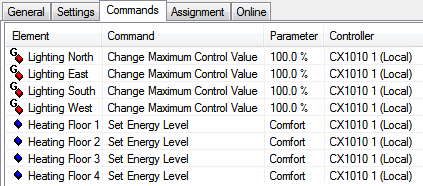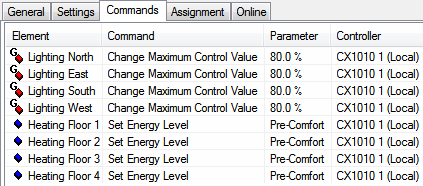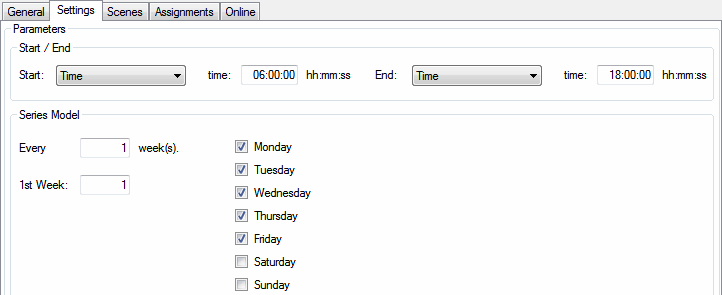Change of operating states
The efficiency of a building is determined by a great many factors. Among other things by the building automation employed. Depending on the structure and complexity, efficiency during operation can be increased and costs can be lowered. A simple and effective method is the temporal division of the building into two operating conditions: productive and non-productive time.
The Productive time and Non-productive time scenes and a weekly timer channel (individual days of the week), Mode change, are added to the project. The Productive time scene is configured first.
Productive time
The brightness of the lighting in the building should be 100 % during the productive time. To this end the Productive time scene contains a command entry in the Commands dialogue for each lamp group that changes the maximum control value. Accordingly, the energy level for the heaters is set to Comfort.

Non-productive time
During the non-productive time all lamp groups are set to a maximum control value of 80 % and the heaters to the Standby energy level.

Timer switch channel
Finally, the timer switch channel is configured in the Settings dialogue so that the scene can be called depending on the day of the week and the time. A normal working week from Monday to Friday is assumed in which the main operating time of the building is defined from 6 am to 6 pm.

The assignment of the scene calls takes place in the Scenes dialogue, depending on the state of the timer switch channel. The Productive time scene is to be called when switching on and the Non-productive time scene when switching off.

After activation of the configuration the building, controlled by the timer, will change its operating states for the specified time and day of the week.